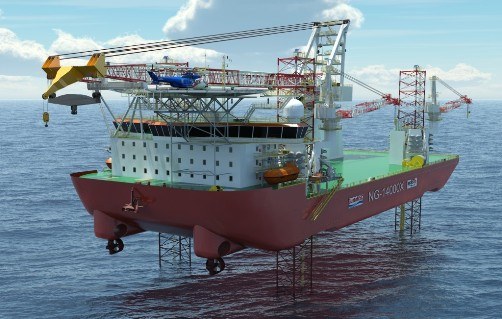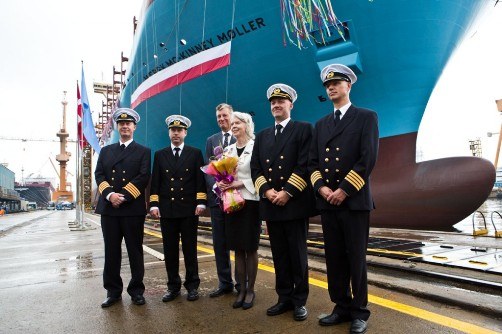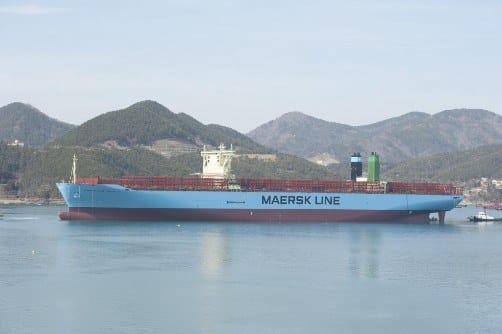Russia’s First Combat Icebreaker, Ivan Papanin, Sets Sail For Sea Trials

Russia is expanding its icebreaker fleet, with its first armed combat icebreaker, Ivan Papanin, now headed for factory sea trials.
The Ivan Papanin, laid down in 2017, is scheduled to join Russia’s Northern Fleet by the end of 2024.
This development is a crucial step in Russia’s preparations for future conflicts in the Arctic region.
The Russian Ministry of Defense has stated that the onboard equipment and propulsion system will be thoroughly tested during these trials.
Ivan Papanin is equipped with a 76mm AK-176MA gun and has pre-installed launchers for anti-ship and Kalibr-NK cruise missiles, which makes it more offensive than the Atomflot’s nuclear icebreakers, which mostly escort commercial vessels through the Northern Sea Route.
With a displacement of approximately 9,000 tons, the vessel can break through five and a half feet of ice, allowing access to most of the Arctic Ocean except during the depths of winter.
The Ivan Papanin is significantly more equipped than Norway’s Svalbard icebreaking patrol vessels, demonstrating Russia’s strategic emphasis on the Arctic.
Two more vessels of this type are being built for Russia’s naval border patrol units.
Russia has commissioned three new nuclear icebreakers in the last four years, with three more under construction.
Ivan Papanin is a member of Russia’s Project 23550 class, designed to perform combat missions with a scalable range of weapons, highlighting the country’s intent to expand armed icebreakers.
Meanwhile, China has also made progress in icebreaker development.
The recent introduction of the Polar Class 6 vessel Ji Di into service increased the number of research icebreakers to three.
Tan Suo San Hao, a larger Polar Class 4 icebreaker, is under construction and is scheduled to begin service in 2025.
In contrast, the United States faces significant delays with its icebreaker program.
Congressional hearings have highlighted ongoing delays and cost overruns. Construction on the new US icebreaker, which will take at least 6-7 years to complete, has yet to begin.
The 50-year-old Polar Star, the US Coast Guard’s sole heavy icebreaker, is undergoing another round of maintenance to extend its service life.
The Polar Star’s current restoration involves a complete revamp of the HVAC system, an electronic control station for the boilers, and a redesign of the flooding alarm system.
This marks the fourth phase of a five-phase service life extension program to keep the vessel operational until a new icebreaker can be built.
TASS says the Russian Navy’s Ivan Papanin has begun factory sea trials.
The ship’s crew has completed extensive training with the Russian Navy and is prepared for Arctic operations.
The Ivan Papanin, launched in October 2019, represents a significant breakthrough in Russia’s Arctic naval capabilities.
It can undertake combat missions and has the potential for future armament upgrades.
The development demonstrates Russia’s strategic commitment to preserving and growing its presence in the increasingly disputed Arctic region.
Reference: The War Zone

Marine Insight Academy
Online courses for the Maritime industry!
Enroll For Maritime Courses
- 100 + Free & Premium Courses
- Learn at your own speed
- Earn certificates on completing Premium Courses
- Quizes to evaluate your knowledge
- Interactive videos

Marine Insight Academy
Enroll For Maritime Courses
- 100 + Free & Premium Courses
- Learn at your own speed
- Earn certificates on completing Premium Courses
- Quizes to evaluate your knowledge
- Interactive videos
Disclaimer :
The information contained in this website is for general information purposes only. While we endeavour to keep the information up to date and correct, we make no representations or warranties of any kind, express or implied, about the completeness, accuracy, reliability, suitability or availability with respect to the website or the information, products, services, or related graphics contained on the website for any purpose. Any reliance you place on such information is therefore strictly at your own risk.
In no event will we be liable for any loss or damage including without limitation, indirect or consequential loss or damage, or any loss or damage whatsoever arising from loss of data or profits arising out of, or in connection with, the use of this website.
Disclaimer :
The information contained in this website is for general information purposes only. While we endeavour to keep the information up to date and correct, we make no representations or warranties of any kind, express or implied, about the completeness, accuracy, reliability, suitability or availability with respect to the website or the information, products, services, or related graphics contained on the website for any purpose. Any reliance you place on such information is therefore strictly at your own risk.
Do you have info to share with us ? Suggest a correction
About Author
Marine Insight News Network is a premier source for up-to-date, comprehensive, and insightful coverage of the maritime industry. Dedicated to offering the latest news, trends, and analyses in shipping, marine technology, regulations, and global maritime affairs, Marine Insight News Network prides itself on delivering accurate, engaging, and relevant information.

About Author
Marine Insight News Network is a premier source for up-to-date, comprehensive, and insightful coverage of the maritime industry. Dedicated to offering the latest news, trends, and analyses in shipping, marine technology, regulations, and global maritime affairs, Marine Insight News Network prides itself on delivering accurate, engaging, and relevant information.
Related Articles
Daily Maritime News, Straight To Your Inbox
Sign Up To Get Daily Newsletters
Join over 60k+ people who read our daily newsletters
By subscribing, you agree to our Privacy Policy and may receive occasional deal communications; you can unsubscribe anytime.






BE THE FIRST TO COMMENT